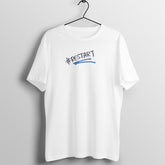Sustainable Threads : Know Your Fabrics
"Sustainable Threads: Navigating the Landscape of Eco-Friendly Fabrics in Fashion"
In the ever-evolving world of fashion, where trends come and go, there is a growing awareness of the need for sustainability. The environmental impact of the clothing industry has prompted a shift towards more eco-friendly practices, and a crucial aspect of this change is the materials used in garment production. In this comprehensive guide, we will explore a myriad of fabrics, unravelling the complexities of sustainability, and shedding light on the choices that can help shape a greener future.
-
The Timeless Debate: Conventional Cotton vs. Organic Cotton:
Conventional Cotton: Conventional cotton, a staple in the fashion industry, comes with a heavy environmental cost. The extensive use of pesticides and water-intensive cultivation practices make it a less-than-ideal choice for the eco-conscious consumer.
Organic Cotton: On the other hand, organic cotton offers a sustainable alternative. Grown without synthetic pesticides or fertilizers, organic cotton minimizes environmental impact while still providing the softness and versatility that cotton is known for.
-
Linen: Breathable Elegance with a Green Twist:
Derived from the flax plant, linen is celebrated for its breathability and crisp texture. What makes it a sustainable choice is its relatively low environmental impact. Linen cultivation requires fewer pesticides and less water compared to conventional cotton, making it a preferred option for environmentally conscious fashionistas.
-
Hemp: A Jack of All Trades in Sustainability:
Hemp, often overshadowed in the past, is making a comeback in the fashion industry. This versatile plant requires minimal water and no pesticides to thrive. Its strong and durable fibers are ideal for a range of clothing items, from casual wear to high-end fashion.
-
Tencel/Lyocell: The Rise of Eco-Friendly Elegance:
Tencel, a branded form of lyocell, is a fabric made from sustainably sourced wood pulp. The production process is not only eco-friendly but also results in a fabric that is soft, breathable, and versatile. Look for Tencel in your clothing choices to combine style with sustainability.
-
Bamboo: A Sustainable Giant in Clothing:
Bamboo, a rapidly growing plant, requires minimal water and no pesticides, making it an eco-friendly option. However, it's crucial to note that the processing of bamboo into fabric can involve chemicals. To ensure sustainability, opt for bamboo products that utilize eco-friendly processing methods.
-
Recycled Polyester: Turning Plastic Bottles into Fashion Statements:
The fashion industry is increasingly turning to recycled polyester, derived from repurposed plastic bottles. This innovative approach reduces the demand for new petroleum-based polyester production, offering a sustainable solution to the problem of plastic waste.
-
Wool: Navigating the Landscape of Sustainable Options:
Conventional Wool: While wool is a natural and renewable resource, conventional wool production is often criticized for environmental issues such as land degradation and water pollution.
Organic Wool: For those who appreciate the warmth and versatility of wool, organic wool sourced from sheep raised in organic, humane conditions provides a more sustainable option.
-
Synthetic Fabrics: The Environmental Dilemma:
Fabrics like nylon and polyester, while durable and versatile, are derived from non-renewable resources and can take centuries to decompose. Balancing their functionality with environmental impact is a challenge that the industry is working to address.
Choosing Seasonal and Sustainable Fabrics:
When it comes to selecting fabrics that can stand the test of all seasons while contributing to a healthier planet, consider:
-
Blends: Combining natural fibers like cotton, linen, and Tencel for a balance of breathability and insulation.
-
Layering Options: Opt for versatile fabrics that can be layered for warmth in colder seasons and worn alone in warmer weather.
-
Versatile Weaves: Fabrics with adaptable weaves, such as twill or jersey, can seamlessly transition between different temperatures.
Conclusion:
As conscious consumers, our choices matter. By opting for sustainable and biodegradable fabrics, we not only make a statement with our style but also contribute to a more environmentally friendly future for the fashion industry. The journey towards sustainable fashion is ongoing, and as we weave these choices into the fabric of our lives, we contribute to a tapestry of positive change. The key is to be informed, stay curious, and make choices that align with our values for a fashion industry that respects both style and the planet.
Now, you know what to use - what about not to be used?
Synthetic Fabrics to Avoid: The Environmental Pitfalls:
While synthetic fabrics like polyester and nylon offer affordability and durability, their production raises serious environmental concerns. These fabrics are derived from petrochemicals, contributing to the depletion of non-renewable resources. Moreover, the manufacturing process releases greenhouse gases and other pollutants into the air and water, further exacerbating environmental degradation.
Synthetic fabrics have a detrimental impact on marine life, as microplastic particles shed during washing find their way into oceans and waterways, causing pollution. Additionally, these fabrics do not biodegrade easily and can persist in the environment for hundreds of years.
To make more sustainable choices, it's advisable for consumers to steer clear of garments made entirely from synthetic materials. Instead, consider alternatives like recycled polyester or blends that incorporate natural fibers. By avoiding single-use, non-biodegradable fabrics, we can collectively reduce the fashion industry's ecological footprint and encourage the adoption of more sustainable practices. Remember, as consumers, our choices hold the power to drive positive change in the fashion landscape.
Certainly! Synthetic fabrics have become widely used in the clothing industry due to their durability, affordability, and versatility. Here's a list of common synthetic fabrics:
-
Polyester:
- Known for its durability, wrinkle resistance, and quick drying properties. Used in various clothing items, including shirts, dresses, and activewear.
-
Nylon:
- Lightweight and strong, nylon is often used in hosiery, swimwear, and activewear. It has moisture-wicking properties and is resistant to abrasion.
-
Spandex (Lycra or Elastane):
- Highly elastic, spandex is commonly blended with other fibers to add stretch and flexibility to garments. Often found in sportswear, leggings, and undergarments.
-
Acrylic:
- A synthetic alternative to wool, acrylic is known for its softness and warmth. It's often used in sweaters, scarves, and other cold-weather garments.
-
Rayon:
- While derived from natural sources like wood pulp, rayon is considered a semi-synthetic fiber due to the manufacturing process. It's used in a variety of clothing items, including blouses, dresses, and lining fabrics.
-
Polypropylene:
- Lightweight and moisture-wicking, polypropylene is commonly used in activewear, base layers, and thermal clothing.
-
Microfiber:
- Ultrafine synthetic fibers, often made from polyester or nylon, create fabrics with a soft, suede-like texture. Microfiber is used in various clothing items, including athleisure wear and undergarments.
-
Acetate:
- Derived from cellulose, acetate is used in clothing items like linings, blouses, and dresses. It has a silky appearance and drapes well.
-
Olefin (Polypropylene):
- Known for its strength and resistance to moisture, olefin is used in activewear, outerwear, and socks.
-
Modal:
- While derived from beech trees, modal undergoes significant processing, making it a semi-synthetic fiber. It is often used in underwear, pajamas, and T-shirts for its soft and breathable qualities.
It's important to note that while these synthetic fabrics offer various benefits, their production and disposal can have environmental consequences. As consumers become more conscious of sustainability, alternatives like recycled polyester and eco-friendly manufacturing processes are gaining traction in the industry.









